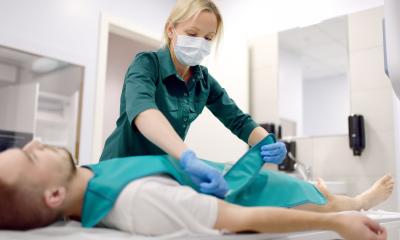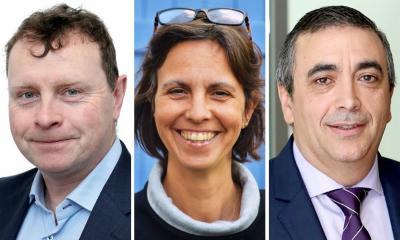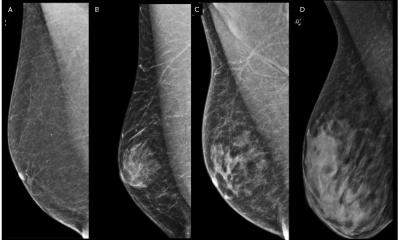Source: NRPB (2001). X-rays - how safe are they? An information leaflet for patients prepared by the National Radiological Protection Board, College of Radiographers, Royal College of Radiologists and Royal College of General Practitioners (www.hpa.org.uk).
Article • 'Is it safe?'
Effective communication on radiation risks
Communicating radiation risks is not only a legal requirement, it is also a moral obligation, asserts Dr Shane J Foley, radiographer and assistant professor at the UCD School of Medicine in Dublin, Ireland. Passing on radiation information has its pitfalls, but several helpful tools can improve communication, some of which the expert highlighted during ECR 2018.
Report: Lena Petzold

‘When it comes to radiations risks, as experts we should be the linchpins for communication, because we should know exactly the risk associated with the task we are performing,’ Foley stresses. ‘Unfortunately, this is not the case, as multiple studies show. There’s quite a difference in understanding even between experts. So, we should all go back to basics and increase our own knowledge, because how do we expect to impart information to patients if we don’t comprehend it ourselves?’
Radiation risks are generally associated with either one of two categories: stochastic effects or tissue reactions. ‘While we should be aware of tissue reactions, they are rather uncommon. Current evidence suggests there are between one in 10,000 and one in 100,000 cases and those are mostly skin effects. The main stochastic risk in all our practice related to ionising radiation is that of potential cancer development.’
Successfully conveying information to patients
Cancer is a disease that spreads fear in a flash, so Foley’s advice is to begin a discussion with patients by highlighting the benefit of the examination and its medical need, so as to remind and reassure patients of the procedure’s value.
Throughout any patient conversation it is important to use simple, plain language and focus on a few key points, instead of overwhelming patients with medical terms. Foley also recommends building and using a set of standardised terms.
Besides these basic facts, Foley also offers more personal advice: ‘Minimise the use of numbers and stats,’ he advised. Even though parameters such as effective dose will hold up for comparison, they can be rather confusing for patients who are rarely well acquainted with radiation effects and statistics.
Lifetime risks and natural radiation
Even a relatively high dosage exam, such as a CT, still only changes a man’s risk of developing cancer to one in 2.9955
Shane J Foley
There are more useful tools for conversations with patients such as the comparison of natural risks. ‘We are very concerned with the small increased risk of cancer through radiation procedures, yet we all have quite a high natural risk of developing cancer over a lifetime anyway,’ he points out. The natural cancer incidence is one in three for men and one in four for women. ‘But even a relatively high dosage exam, such as a CT, still only changes a man’s risk of developing cancer to one in 2.9955. That’s a very small additional risk.’
For some patients it can be beneficial to talk in detail about lifetime risks. Low dose exams like an X-ray of an extremity are very hard to differentiate from other background risks, which is why the additional lifetime risk of developing cancer for such a procedure is below 1 in 1,000,000 and therefore negligible. ‘Even the highest dose exams that we deliver are still classified as a low risk event,’ the lecturer explains.
Japanese radiation survivors
Therefore, using those terms and statistics could help to assuage fears, yet there are also some downsides. ‘All of these lifetime risks are based on extrapolations, so they are not precise. They are predominately based on the data we acquired from the Japanese bomb survivors, so a very different population exposed to a large amount of radiation in a short period – which is essentially quite different from what we are doing.’ Furthermore, worried patients might easily see themselves as the one in a million case, the assistant professor warns.
A helpful tool for patient information could lie in illustrating natural radiation exposure. ‘We are all naturally exposed to a certain level of radiation every day through cosmic rays, radon in the ground or consumed food,’ Foley points out. Explaining to patients that ionising radiation is unavoidable puts an examination into perspective. Especially, since there is a large variation in exposure between different regions and countries, yet ‘we would never consider not living in a certain area because of a small increase in radiation exposure’.
Creating a link to personal activities could also help with patient communication. ‘Many ordinary activities are associated with significantly higher lifetime risks than individual diagnostic radiation exposures. We know, for example, that air travel is associated with a small increase in radiation dose, about 0.005 mSv per hour of travel, yet we think nothing of going on multiple plane trips every year,’ says Foley. ‘A chest X-ray is related to a lifetime risk of 1 in 1,000,000, which is the same risk as smoking 1.4 cigarettes, drinking half a litre of wine, driving 300 miles, or cycling 10 miles.’ All these activities are common practice, yet no one is overly concerned with the increased risk of death they are tied to – and they do not even feature a clear medical benefit in return. Comparing a diagnostic procedure with these everyday activities that patients can relate to, levels out the perceived risk it poses. ‘We have to find those measures that hit home with patients,’ Foley emphasises, ‘then we can allay fears’.
Personalising the communication approach is important. ‘We have to be happy to use a range of methods depending on the patient’s ability and understanding as much as on our own.’ Furthermore, communication is never a one-way process, Foley concludes. Listening to patients’ concerns and responding to questions is just as important as finding the right tools to impart information.
Profile:
Assistant professor Shane J Foley PhD lectures at the UCD School Of Medicine in Dublin, Ireland, where he gained his bachelor degree in radiography in 1999. Following this he worked as a radiographer and later senior radiographer in the Mater Misericordiae Hospital, Dublin, and was involved in numerous clinical research projects. His lectureship in Diagnostic Imaging began at UCD in 2007 and Foley is now director of the BSc radiography programme. He gained his PhD in 2013 and is a member of various associations and committees, including the European Federation of Radiographer Societies.
28.11.2018










